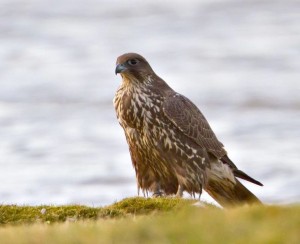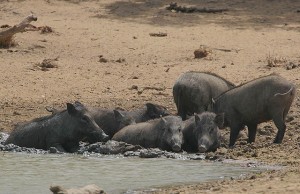Freyja as Goddess of the Dead
Books on Germanic lore usually stress the loving and abundant side of Frejya’s nature and only mention in passing, if at all, her association with death. Cooper cautions “In the necromantic form she has a greed for wealth and can kill by magic. She is an entrapping goddess – better to stay with her side of lust and love.” There are probably several reasons for the hesitation of many to fully explore Frejya’s character. The first is that the god Odin is clearly a shamanic deity whose connections with the lands of the dead are more extensively delineated in written texts. Another reason has to do with Christian disapproval of goddesses and female power. At times a nurturing goddess would be absorbed into the Virgin Mary or declared a saint, but Frejya’s power over death is clearly incompatible with Christianity. We have to keep in mind that Germanic lore was written down for the first time after the Christian conversion by later generations of Christians, after the old religion had been partially dismantled and suppressed. But the male scribes may have ignored Frejya’s necromantic side simply because, as males, there were long-held taboos that kept certain knowledge away from them. Frejya’s cult was probably a feminine one. Frejya’s death aspect is hugely important. Ancestor worship was the basis for ancient religions across Europe, not just with the Germanic tribes. The accumulated knowledge of the society rested with living elders and with those who had passed on. The world of the dead was the source of most divination, healing, spells, songs, and sacred stories. It was also the place where women went to connect with the spirit of their next child, which is why Frejya as goddess of fertility must also be goddess of the dead.The Germanic practice of voyaging to the lands of the dead is called Seidr (SAYTHE). This is not a straightforward journey even for a god or his priest. The living do not belong in these lands and so must travel in disguise, as one who has died. The gods have accomplished this journey by riding a special animal that is allowed to move freely between the worlds, by taking the form of a mouse, by carrying a sprig of mistletoe which is a plant symbolizing death, by borrowing the falcon-feather cape of Frejya, by drawing blood through a self-inflicted wound, and by carrying the branch of a tree that bleeds red sap such as the alder. Sometimes a priest can travel by obtaining a spell from his mother, who for him was the original portal into the world of the living.None of this applies to the daughters of Freyja. The priestess who has reached menarche has right of passage by virtue of her ability to bleed, and so she can enter and leave Freyja’s death-world unmolested.In the next post I will talk about a few of Freyja’s other associations and her relation to the goddess Frigga.


